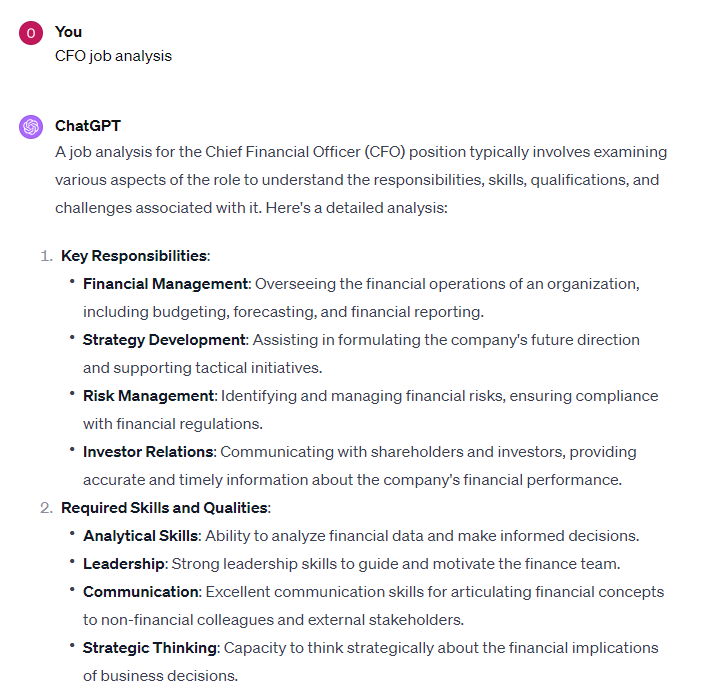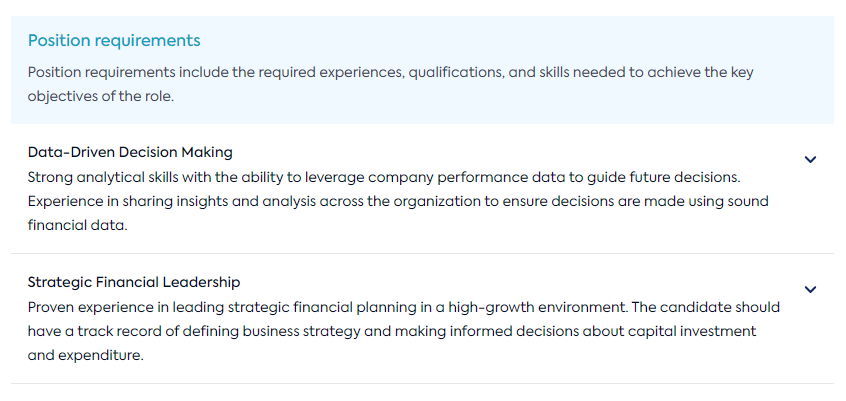How to Speed Up Job Analysis with AI
Ott Niggulis
Job analysis is an essential tool for hiring professionals and managers, and it plays a critical role in ensuring that organisations are able to hire, develop, and retain the best talent.
It’s a systematic process of identifying the skills, knowledge, and abilities required for a job. Information that can then be used to develop detailed job descriptions, hiring scorecards, job ads, and more.
So.. can you use AI to speed up the process? Yes, yes you can! Simply use the conversational AI chatbot of your choice, with Bard and ChatGPT being the more popular ones, and type in:
<POSITION NAME> job analysis
Wait a few seconds, and you’ll have a detailed job analysis that includes key responsibilities, required skills and qualities, educational and professional requirements, etc.
Job done, right?
Not exactly.
What you'll end up with is generic text that might seem fitting at first glance, but on closer inspection, you'll realise it lacks depth. It's overly generic and doesn't go into any detail. It does not know the specifics of the position at your company, and it lacks the context.
This does not mean that you cannot use AI to speed up the process. All it means is that you have to be smart in deploying it for maximum effect.
Looking for Hiring Scorecards? Click here to check out our free scorecard library!
Add context

Example job analysis with ChatGPT
The main reason why the analysis lacked depth is that the AI does not know your company. It has no idea if you are hiring for a startup, a PE-backed company, or a Fortune 500. Even the same role in otherwise similar companies can have vastly different responsibilities.
To overcome that, the first step is to give the AI specific information it can analyse. This could include:
Meeting notes with the hiring manager;
An article that talks about the position;
PDFs;
Word files;
Industry whitepapers;
Job descriptions;
Stakeholder interviews;
Etc.
The bigger idea being that the information or the context that you provide needs to be clear and detailed enough for the AI to analyse and give better answers.
Once you have collected all the relevant information, you can try again and ask the AI to analyse the position. This will give you a much more detailed and nuanced answer as the AI is aware of the specifics.
Next, you can go a step further and, instead of a generic “analyse the position,” experiment by giving the AI different tasks. For example:
- Write a 100-word position description
- Write a 10-point summary of the position
- Write 6 key objectives
- Come up with four behavioural interview questions
Example - a comprehensive CFO scorecard
As an example, for Wisnio’s CFO scorecard, I used a comprehensive and detailed article by a16z that covers many aspects of CFOs in a growing company and thus is an excellent source material for AI analysis.
The article covers different types of CFOs and their unique strengths, the strategic and operational roles of a CFO, the timing for hiring a CFO, guidance on setting up a CFO for success, and more.
For the scorecard, I asked ChatGPT to write 5-7 key objectives based on information found in the a16z guide. Next, I asked it to write the position requirements required to fulfil these key objectives.
Once that was done, I fed the Wisnio Competency Library into ChatGPT and tasked it with choosing the competences most needed to fulfil the objectives and requirements of the role. Wrapping up the scorecard involved asking the AI to draft behavioural interview questions tailored to the objectives, requirements, and competencies it came up with before.
And with that done I had a finished comprehensive CFO scorecard, a practical tool for anyone on the lookout for a capable Chief Financial Officer. Dive into the full details of the finished scorecard here - Chief Financial Officer Scorecard.
For a more detailed look on how to build scorecard with AI (including the prompts used), check out our guide: How to use AI to write concise hiring scorecards from scratch.

Conclusions
Whilst AI can significantly speed up the job analysis process, its effectiveness largely depends on the context and specific information about the company and the role that the user provides it.
On its own, AI chatbots give generic analysis that fits everyone and no one in particular. It’s the added context and specifics, together with the AI, that makes this a powerful tool.
To harness the full potential of AI without the hassle, consider WisGPT. With direct access to team and candidate-specific talent data and our proprietary training, WisGPT delivers hyper-personalised summaries and answers any questions you have about the team, a particular team member or a candidate, allowing you to focus on the truly strategic aspects of hiring.